TOYOTA RAV4 EV 2014 1.G Owners Manual
Manufacturer: TOYOTA, Model Year: 2014, Model line: RAV4 EV, Model: TOYOTA RAV4 EV 2014 1.GPages: 521, PDF Size: 7.44 MB
Page 91 of 521
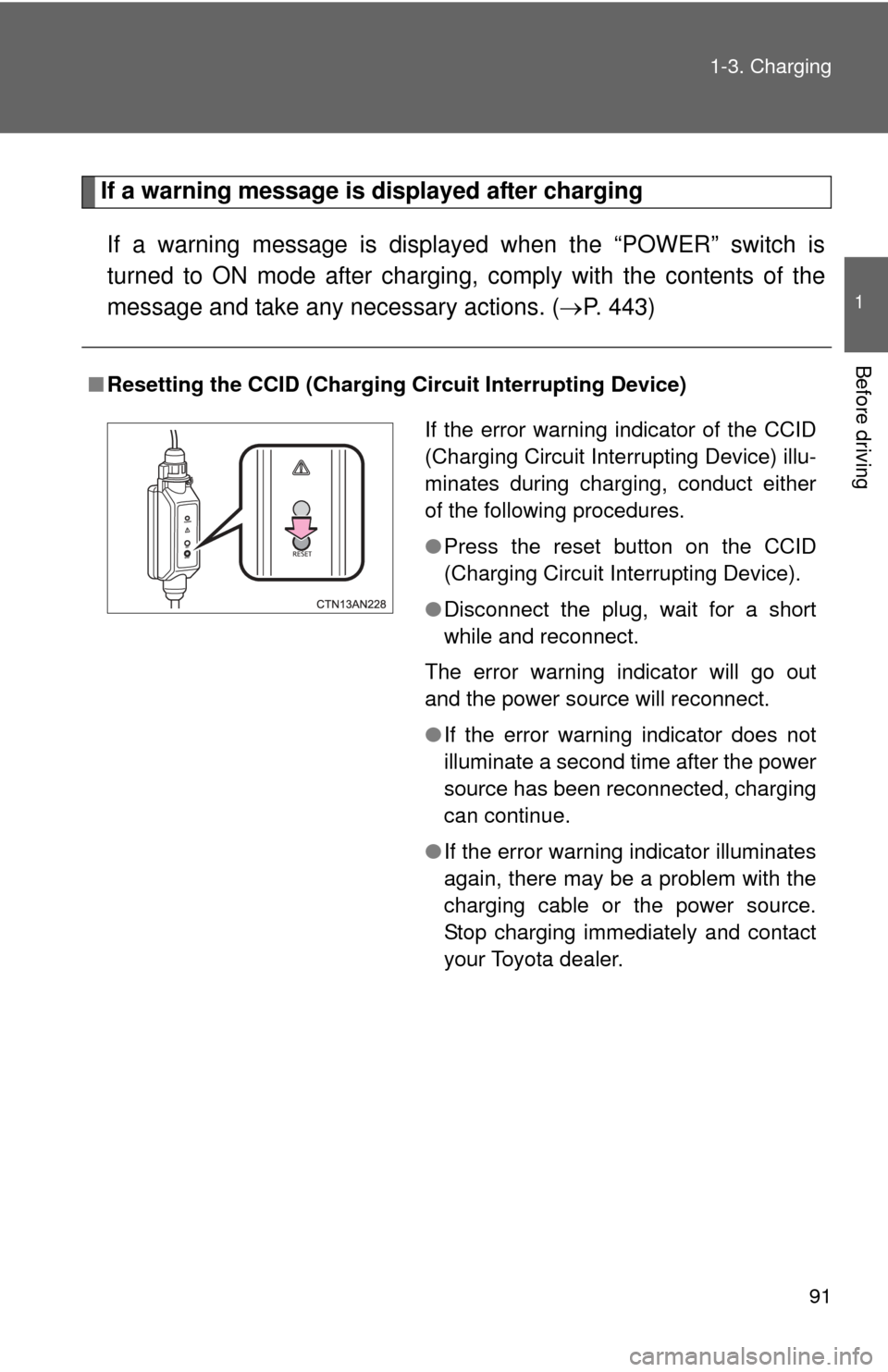
91
1-3. Charging
1
Before driving
If a warning message is displayed after charging
If a warning message is displayed when the “POWER” switch is
turned to ON mode after charging, comply with the contents of the
message and take any necessary actions. ( P. 443)
■Resetting the CCID (Charging Circuit Interrupting Device)
If the error warning indicator of the CCID
(Charging Circuit Interrupting Device) illu-
minates during charging, conduct either
of the following procedures.
●Press the reset button on the CCID
(Charging Circuit Interrupting Device).
● Disconnect the plug, wait for a short
while and reconnect.
The error warning indicator will go out
and the power source will reconnect.
● If the error warning indicator does not
illuminate a second time after the power
source has been reconnected, charging
can continue.
● If the error warning indicator illuminates
again, there may be a problem with the
charging cable or the power source.
Stop charging immediately and contact
your Toyota dealer.
Page 92 of 521
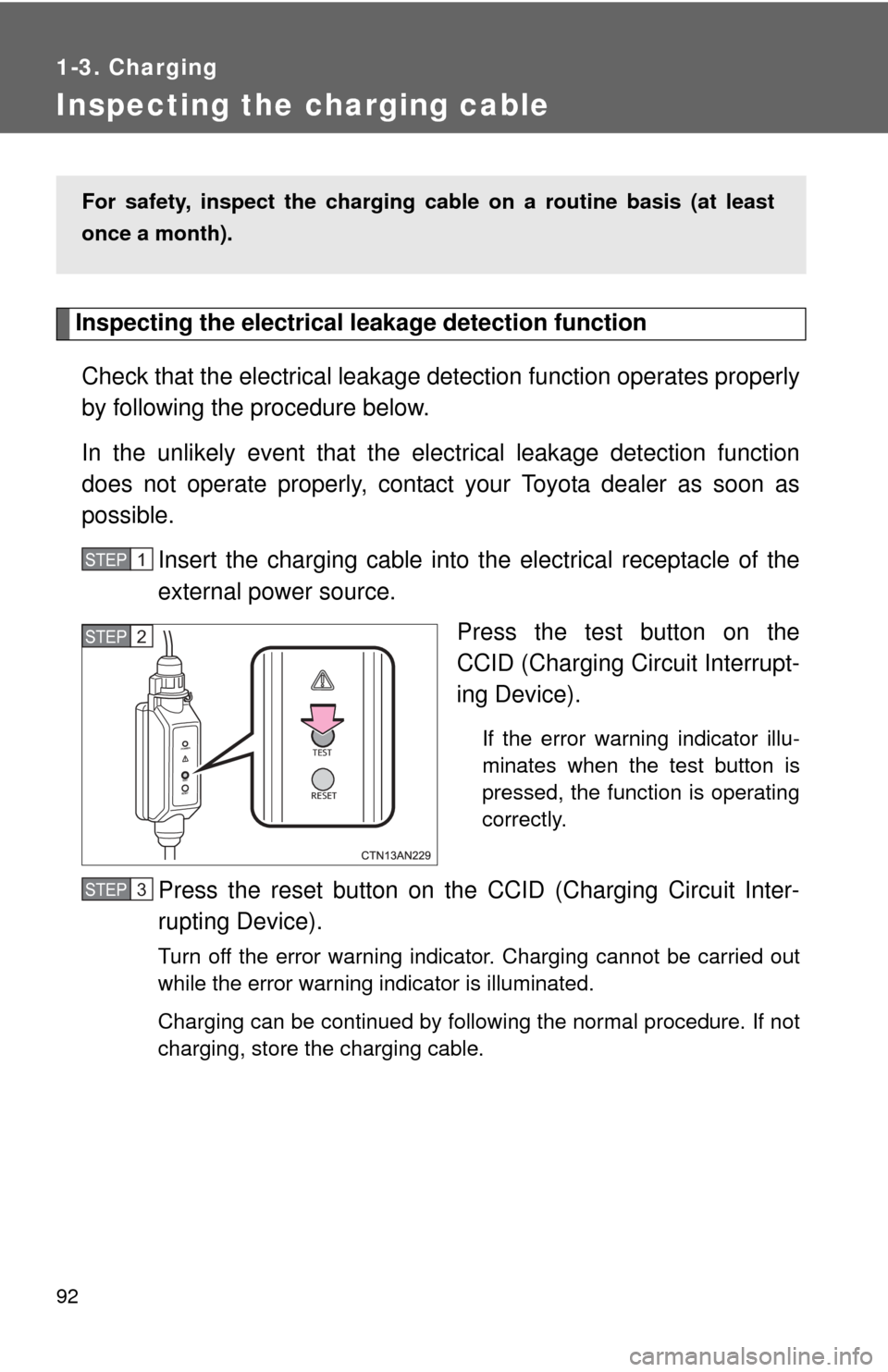
92
1-3. Charging
Inspecting the charging cable
Inspecting the electrical leakage detection function
Check that the electrical leakage detection function operates properly
by following the procedure below.
In the unlikely event that the elec trical leakage detection function
does not operate properly, contact your Toyota dealer as soon as
possible.
Insert the charging cable into t he electrical receptacle of the
external power source.
Press the test button on the
CCID (Charging Circuit Interrupt-
ing Device).
If the error warning indicator illu-
minates when the test button is
pressed, the function is operating
correctly.
Press the reset button on the CCID (Charging Circuit Inter-
rupting Device).
Turn off the error warning indicator. Charging cannot be carried out
while the error warning indicator is illuminated.
Charging can be continued by following the normal procedure. If not
charging, store the charging cable.
For safety, inspect the charging cable on a routine basis (at least
once a month).
STEP 1
STEP 2
STEP 3
Page 93 of 521

93
1-3. Charging
1
Before driving
CAUTION
■
Routine inspection
Check the following points regularly.
If use is continued without inspection, fire or electric shock may occur, possi-
bly resulting in death or serious injury.
●The charging cable, plug, charging connector, CCID (Charging Circuit
Interrupting Device) etc. have not been damaged
● The electrical receptacle has not been damaged
● The plug does not get extremely hot during use
● The tip of the plug has not been deformed
● The plug is not dirtied by dust etc.
Inspect the plug after removing it from the electrical receptacle.
■ Maintaining the charging cable
When the cable is dirty, first remove the dirt with a squeezed out cloth, and
then wipe the cable with a dry cloth. Do not wash with water, as doing so
could cause a fire or electrical shock when charging, which could lead to
death or serious injury.
■ When not using the char ging cable for a long time
Remove the plug from the electrical receptacle. Dust could accumulate on
the plug or in the electrical receptacle, possibly causing overheating which
could lead to a fire.
Also, keep the cable in a place free from moisture.
Page 94 of 521
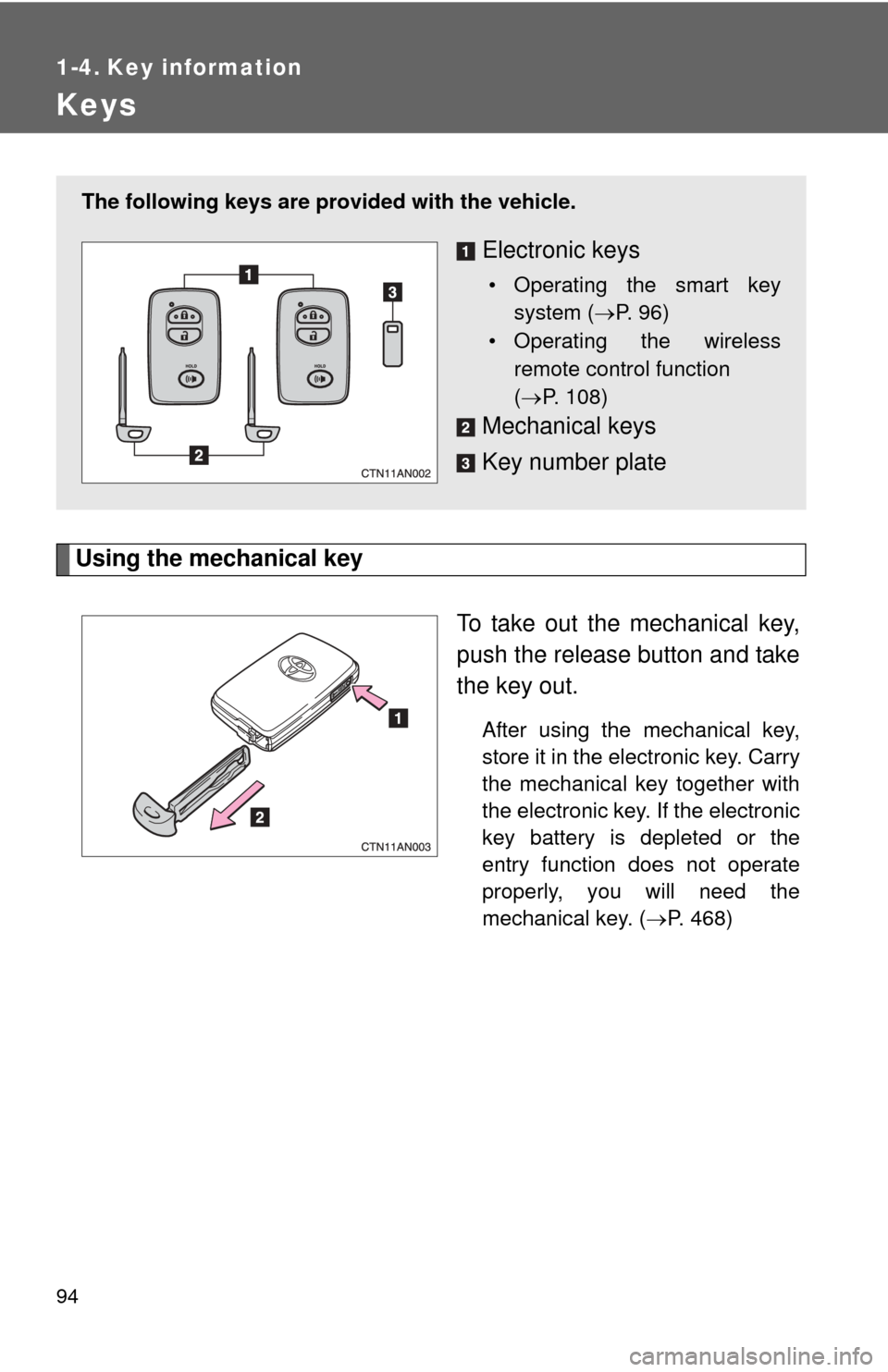
94
1-4. Key information
Keys
Using the mechanical keyTo take out the mechanical key,
push the release button and take
the key out.
After using the mechanical key,
store it in the electronic key. Carry
the mechanical key together with
the electronic key. If the electronic
key battery is depleted or the
entry function does not operate
properly, you will need the
mechanical key. (P. 468)
The following keys are provid ed with the vehicle.
Electronic keys
• Operating the smart key
system ( P. 96)
• Operating the wireless remote control function
( P. 108)
Mechanical keys
Key number plate
Page 95 of 521

95
1-4. Key information
1
Before driving
■
When required to leave a key to th e vehicle with a parking attendant
Lock the glove box as circumstances demand. ( P. 297)
Remove the mechanical key for your own use and provide the attendant with
the electronic key only.
■ Key number plate
Keep the plate in a safe place such as your wallet, not in the vehicle. In the
event that a key is lost, a new key can be made by your Toyota dealer using
the key number plate. ( P. 467)
■ When riding in an aircraft
When bringing a key with wireless remote control function onto an aircra\
ft,
make sure you do not press any buttons on the key while inside the aircraft
cabin. If you are carrying the key in your bag etc, ensure that the buttons are
not likely to be pressed accidentally. Pressing a button may cause the key to
emit radio waves that could interfere with the operation of the aircraft.
NOTICE
■To prevent key damage
●Do not subject the keys to strong shocks, expose them to high tempera-
tures by placing them in direct sunlight, or get them wet.
● Do not expose the keys to electromagnetic materials or attach any mate-
rial that blocks electromagnetic waves to the key surface.
● Do not disassemble the key.
Page 96 of 521
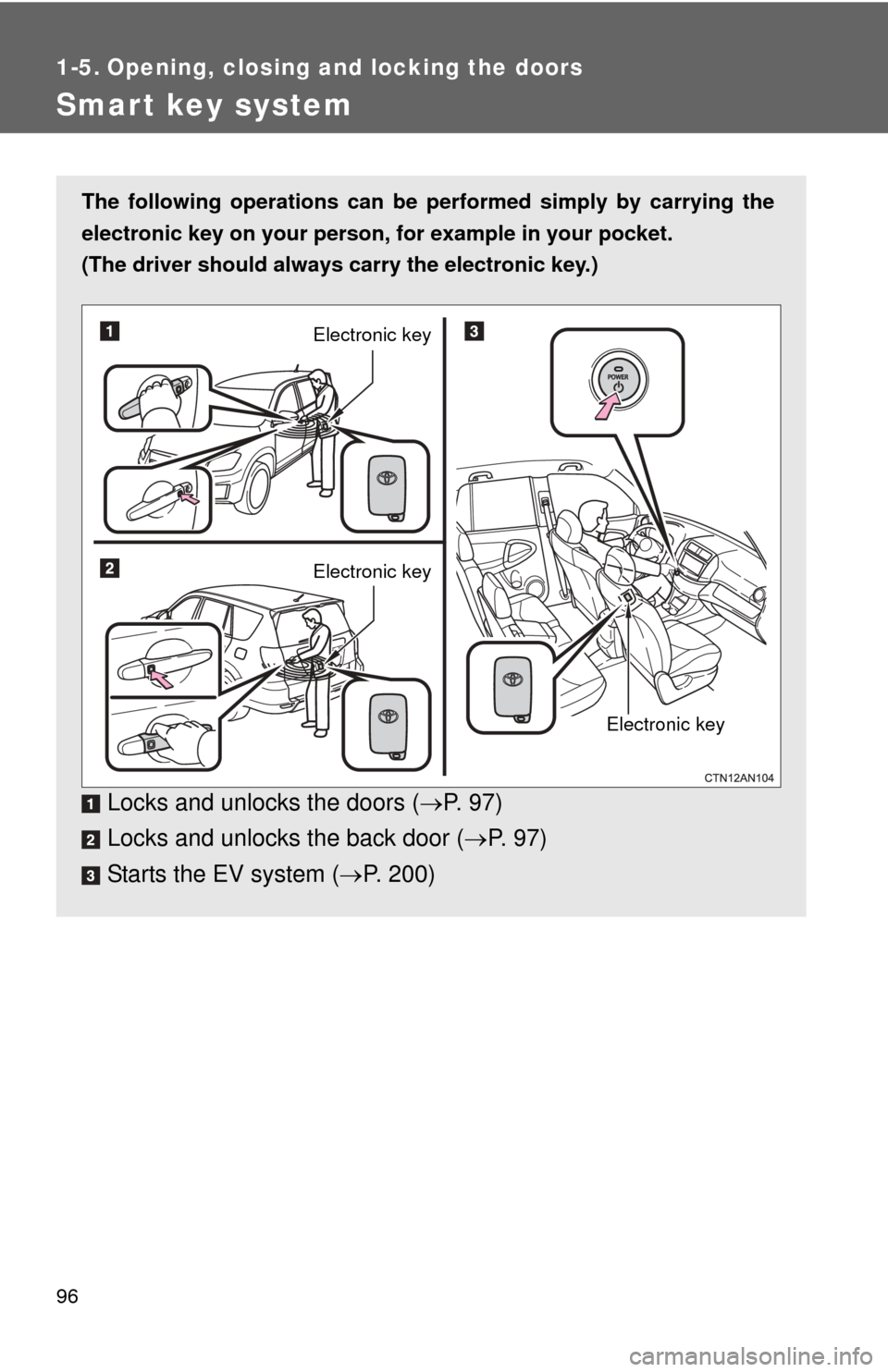
96
1-5. Opening, closing and locking the doors
Smart key system
The following operations can be performed simply by carrying the
electronic key on your person, for example in your pocket.
(The driver should always carry the electronic key.)
Locks and unlocks the doors ( P. 9 7 )
Locks and unlocks the back door ( P. 97)
Starts the EV system ( P. 200)
Electronic key
Electronic key
Electronic key
Page 97 of 521

97
1-5. Opening, closing and locking the doors
1
Before driving
Unlocking and locking the doors and back door (front and back
door handles only)
Grip the driver’s door handle to
unlock the door. Grip the passen-
ger’s door handle to unlock all
the doors.*
Make sure to touch the sensor on
the back of the handle.
The doors cannot be unlocked for
3 seconds after the doors are
locked.
*: The door unlock settings can bechanged. ( P. 103)
Press the lock button to lock the
doors.
Page 98 of 521
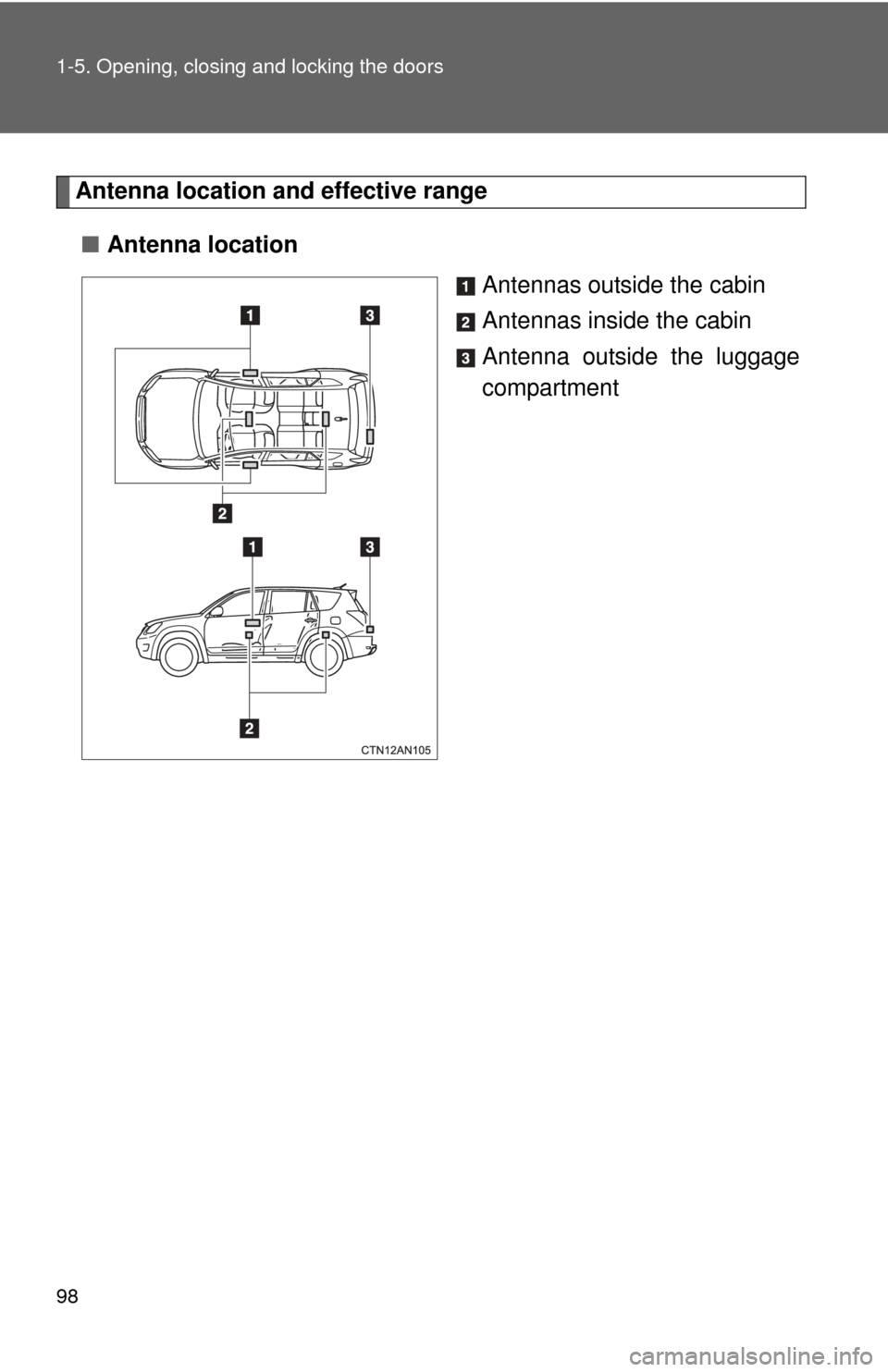
98 1-5. Opening, closing and locking the doors
Antenna location and effective range
■ Antenna location
Antennas outside the cabin
Antennas inside the cabin
Antenna outside the luggage
compartment
Page 99 of 521
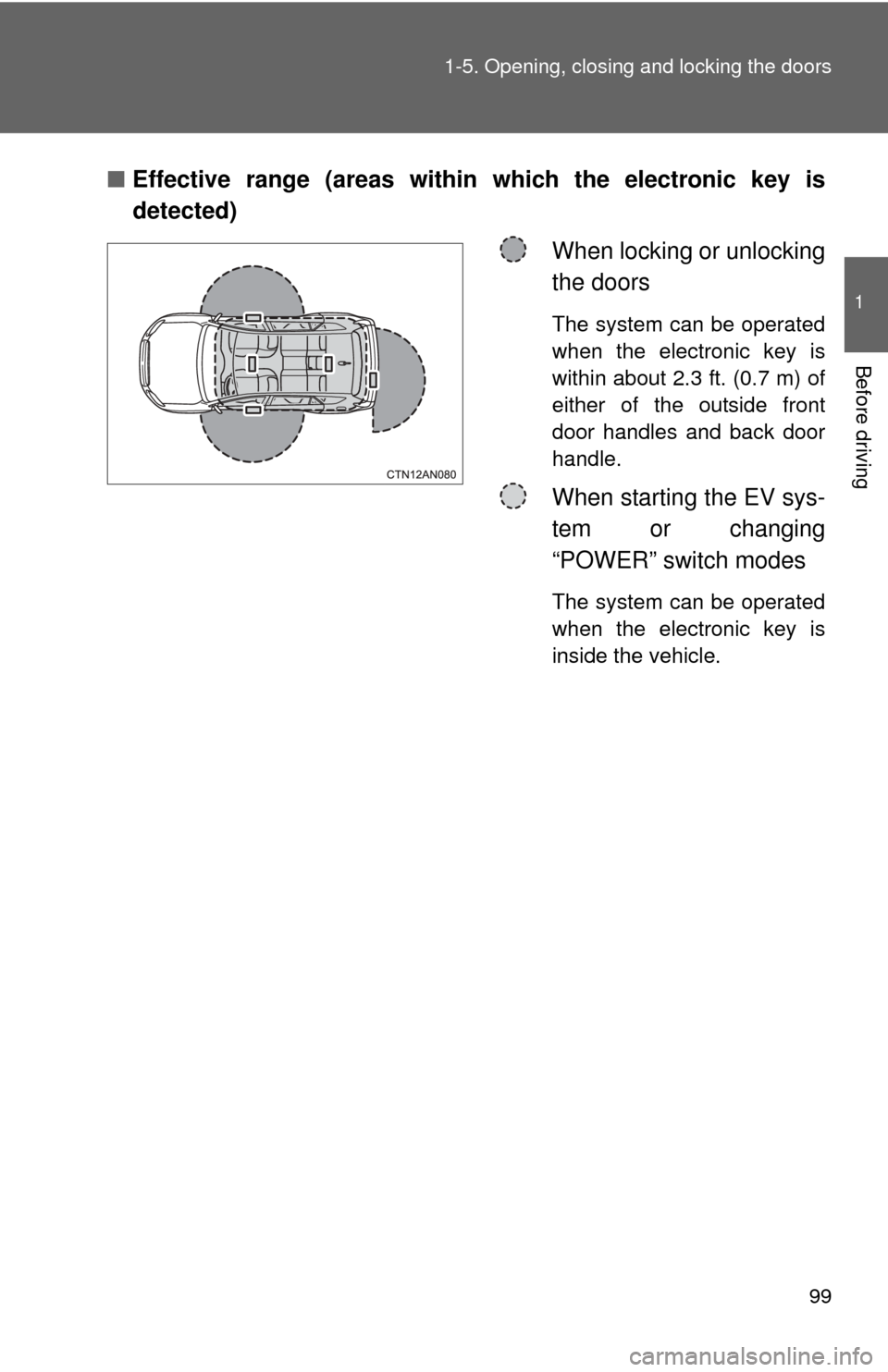
99
1-5. Opening, closing and locking the doors
1
Before driving
■
Effective range (areas within which the electronic key is
detected)
When locking or unlocking
the doors
The system can be operated
when the electronic key is
within about 2.3 ft. (0.7 m) of
either of the outside front
door handles and back door
handle.
When starting the EV sys-
tem or changing
“POWER” switch modes
The system can be operated
when the electronic key is
inside the vehicle.
Page 100 of 521
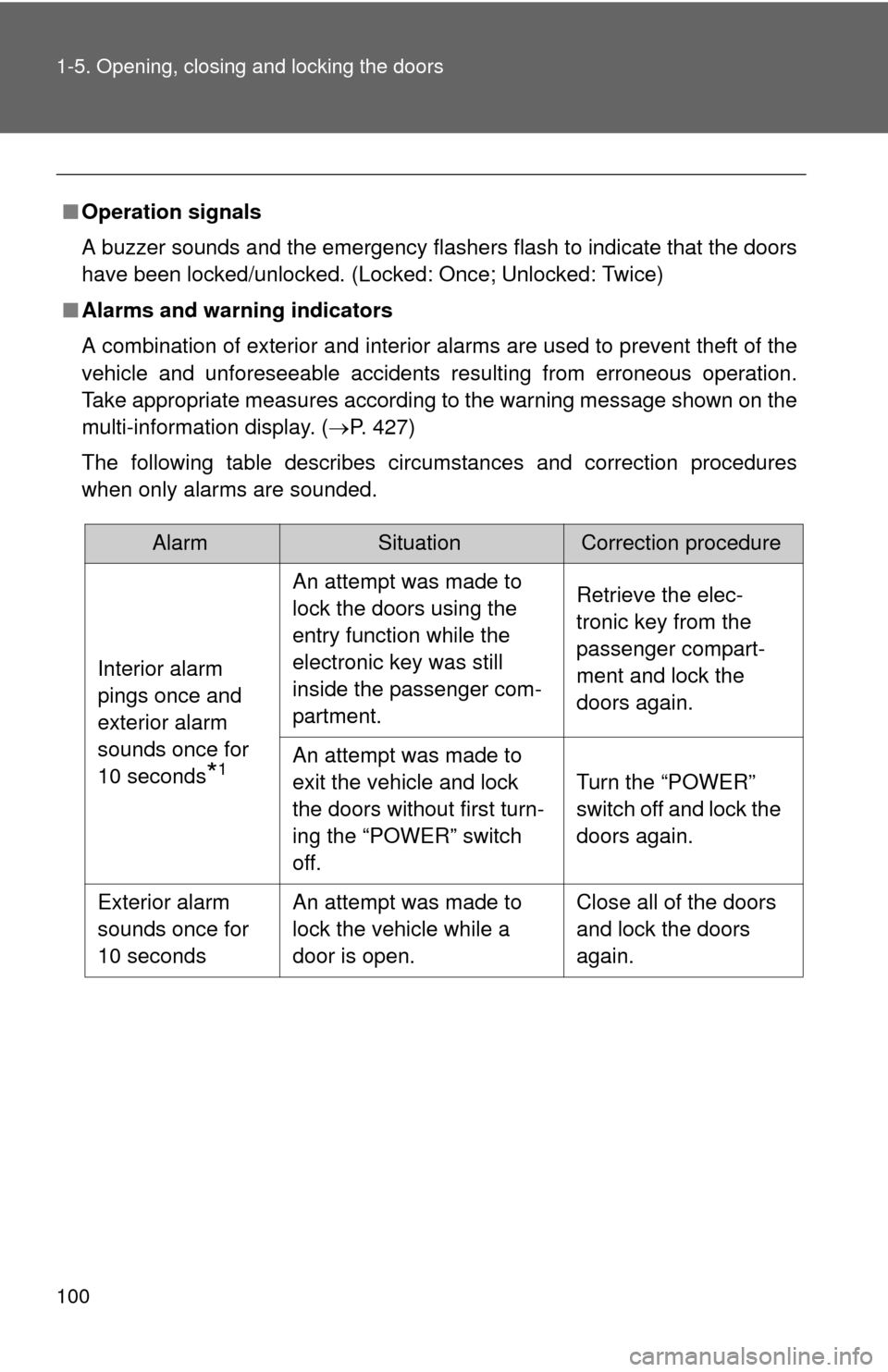
100 1-5. Opening, closing and locking the doors
■Operation signals
A buzzer sounds and the emergency flashers flash to indicate that the doors
have been locked/unlocked. (Locked: Once; Unlocked: Twice)
■ Alarms and warning indicators
A combination of exterior and interior alarms are used to prevent theft of the
vehicle and unforeseeable accidents resulting from erroneous operation.
Take appropriate measures according to the warning message shown on the
multi-information display. ( P. 427)
The following table describes circumstances and correction procedures
when only alarms are sounded.
AlarmSituationCorrection procedure
Interior alarm
pings once and
exterior alarm
sounds once for
10 seconds
*1
An attempt was made to
lock the doors using the
entry function while the
electronic key was still
inside the passenger com-
partment. Retrieve the elec-
tronic key from the
passenger compart-
ment and lock the
doors again.
An attempt was made to
exit the vehicle and lock
the doors without first turn-
ing the “POWER” switch
off. Turn the “POWER”
switch off and lock the
doors again.
Exterior alarm
sounds once for
10 seconds An attempt was made to
lock the vehicle while a
door is open. Close all of the doors
and lock the doors
again.